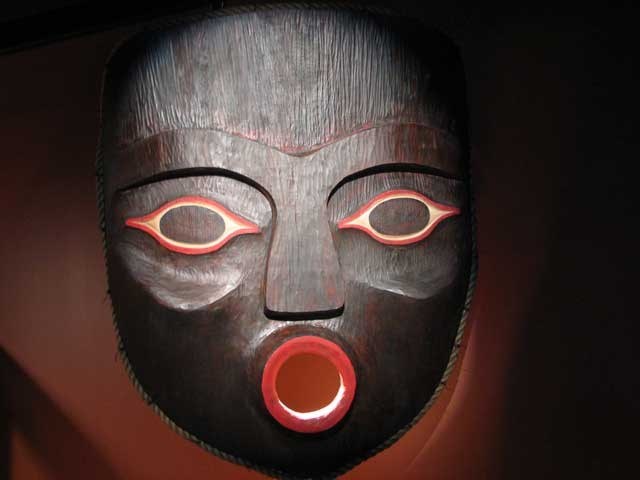The first thing you’ll see will be two very large, intricately carved spindle whorls, one impressed by the Lil’wat, the other by the Squamish. Smaller versions were used to make wool from mountain goat coats, but these large demonstration pieces are more of a welcome.
Over 10 years and some $20 million in the making, the Squamish Lil’wat Cultural Centre is nearing its grand opening, scheduled for July 10. Prior to that, there’ll be a soft opening on June 21.
There’s still some work that needs to be done. Beyond the spindle whorls, the floor is decorated in images of sea, mountain and forest. These images are from photographs of the surrounding area. As this is the paid entrance area of the building, one of approximately 20 trained ambassadors will guide visitors through the experience.
“I find it much more interesting when you go with someone from one of the nations,” said Nora Weber, referring to an outdoor cultural walk to be offered by the centre. “The experience is much richer.”
Rich indeed. Aside from building to LEED standards, architect Alfred Waugh designed the building to emulate some of the traditional structures of each nation. The windows, for example, represent the shingles of the longhouse. Downstairs, there’s a pit house, or Lil’wat i’stken. The whole complex spans some 30,400 square feet.
“Another thing the architect was doing, when he built the trusses, he wanted them to be evocative of bows, as in bows and arrows,” said spokesperson Weber.
Further along in the centre are canoes, some quite short, as the Lil’wat were a river-faring people. Another canoe, however, is considerably larger; it was used by Squamish natives on the sea.
“They will have meetings and conventions here,” said Weber, “and those canoes are designed to be lifted up.”
An 80-person theatre will run a cultural film, a fitting complement to the museum area, which is furnished with glass cases containing masks, drums and carvings.
“What they’re doing is creating a sense of how people lived pre-contact,” Weber said. “Some of it’s old and some of it’s new.”
And some of it’s universal. All cultures have warning tales, little yarns spun to discourage kids from mischievous or dangerous behaviour. The Germans had Struwwelpeter, and the First Nations had the wild man or woman. Wander into the woods, little ones, and you may fall prey. Eerie carvings of the face hang from corners of the museum.
Outside, a 220-foot cedar deck will overlook Blackcomb Mountain, and replicas of a traditional longhouse and i’stken will be on site.
The centre represents a new stage in First Nations renaissance. Culture lost is once again being discovered, and the spindle whorls at the entrance are a prime example.
“The Squamish, they had pretty much lost the tradition,” Weber said. “The women in the ’50s and ’60s made a living from it. So it was integral not just to the culture, but to the economy.”




